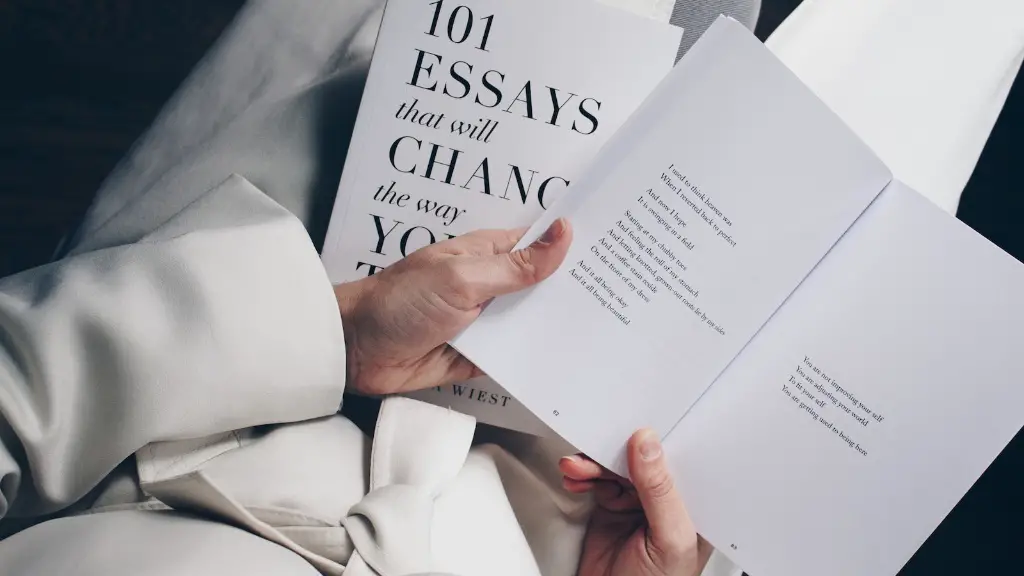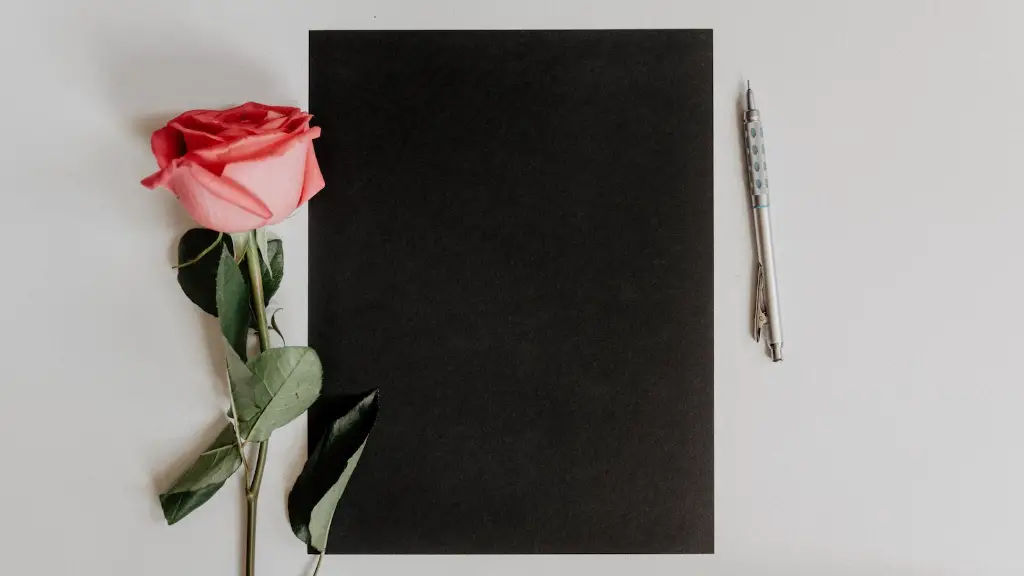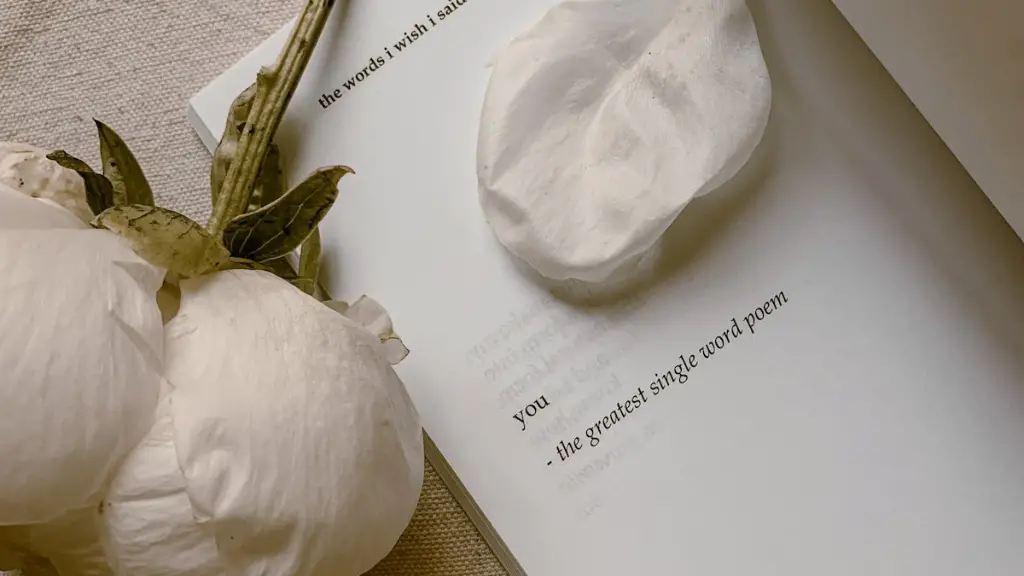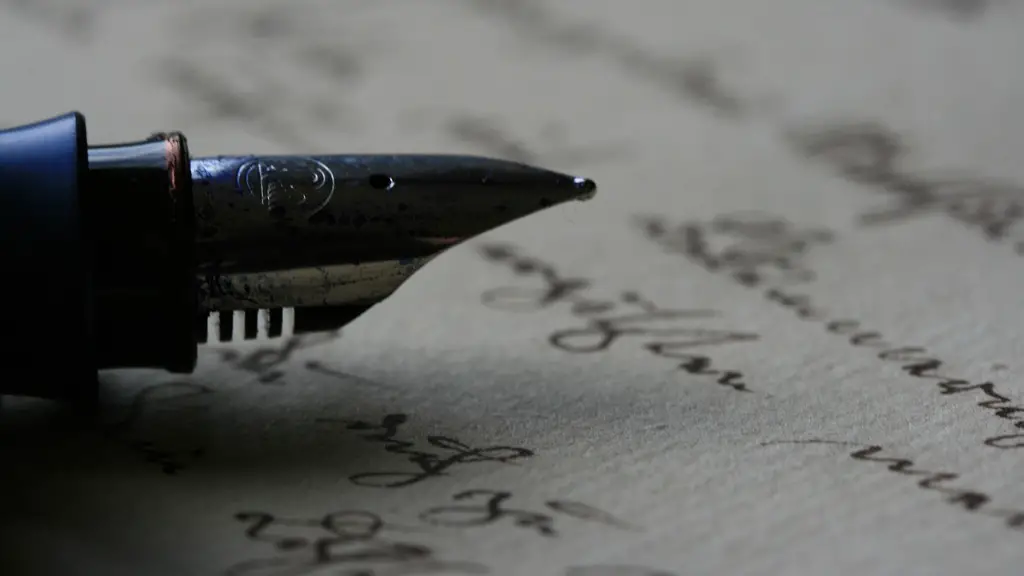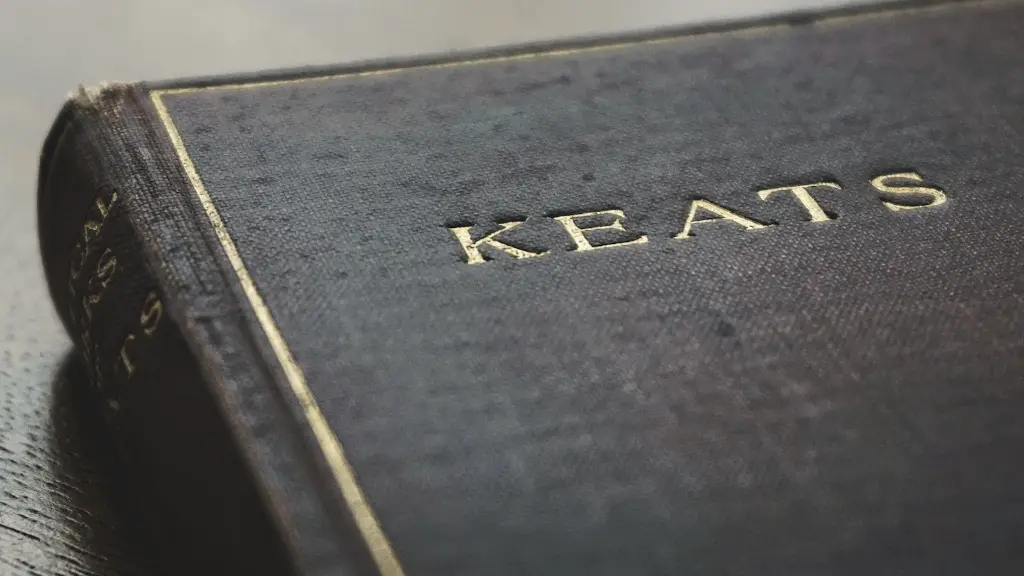Rhythm in poetry is an important and complex literary device. Though it may not be immediately obvious, the way words are arranged and emphasised can have a profound effect on the reader. The combination of meter, rhyme, and other features of poetry all contribute to the sense of rhythm which underlies the sound and effect of the poem. By understanding the various components that make up rhythm in poetry, it is possible to appreciate the deeper meaning behind poetic works.
At its simplest, rhythm in poetry is determined by the rhythmical pattern of stressed syllables. This pattern, usually referred to as ‘meter’, is a crucial component. Most frequently, this is structured based on the number of syllables in a line of poetry – for example iambic pentameter, in which five pairs of unstressed/stressed syllables occur in each line. By making the syllables of a line conform to a set structure, the reader is able to sense the rhythm of the poem.
Another component of rhythm in poetry is rhyme. This is when words at the end of lines have similar sounds, such as ‘cat’, ‘hat’, and ‘mat’. This is not always a requirement, but when it is included it adds to the rhythm of the poem and reinforces the structure. Rhyme can be end-rhyme, internal-rhyme, or slant-rhyme, but all are used to increase the interest and flow of the poem.
By creating certain expectations of what is to come – by using regular metre and rhyme – the poet is able to convey feelings, emotions, and ideas which are otherwise difficult to express. A poem would not be effective without a well-structured, rhythmic base. The rhythm of the poem gives the reader an insight into the poet’s intentions, and can add layers of meaning which would be lost if the poem was simply a jumble of words.
On top of this, it is worth noting that rhythm in poetry is often entirely unique. Poets can break away from the regular strictures of metre and rhyme, creating an unexpected, often jarring effect – though this will often be quite deliberate. This can be done in various ways, with the use of onomatopoeia and other sound-effects. Alternately, by remove the regular rhythmic patterns, poets can evoke surprise in the reader and create pleasing new patterns.
Prosodic Variables
One of the most important tools of a poet is the use of prosodic variables. These are elements which can cause changes in the meter, sound, flow, and rhythm of a poem. Allowing for subtle deviations from the main rhythm, these techniques can create a more engaging and emotive poem for the reader. Examples include alliteration, assonance, and onomatopoeia.
Alliteration involves the repetition of a consonant in two or more syllables. Examples could include phrases like ‘silently screaming’ and ‘roughly rolling’. This can be used for emphasis and to create particular effects – for example, to emphasise a harsh or gruff sound. Referred to as head rhymes, this technique can also be used to create a kind of rhythm on its own.
Assonance, meanwhile, is the repetition of a vowel sound in words that are close together. An example could be ‘sea’ and ‘hear’, or ‘out’ and ‘loud’. This can add emphasis and create pleasing sonic effects. It also adds a sense of rhythm and flow to lines of poetry, allowing the reader to easily identify and latch onto patterns.
Onomatopoeia
Onomatopoeia is the use of words which imitate sounds, such as ‘splash’, ‘whisper’, and ‘sizzle’. It is often used to create an immersive soundscape, adding depth to the poem and evoking vivid imagery. Onomatopoeia is a powerful poetic tool; it can often transform what could otherwise be a dull line into something truly striking.
Added to this, onomatopoeia has the power to create its own kind of rhythm. As the reader is already familiar with the sounds which the words create, it can build a kind of expectation in their mind. Again, this can be used to create expectations and highlight certain ideas, as well as providing rhythmic interest. This can be used alongside other rhythmic elements, or by itself.
Rhythmic Complexity
In keeping with the idea of breaking away from traditional rhythmic patterns, it is worth noting that most poetry also contains a degree of inner-rhythm – that is, an underlying complexity which should be accounted for. Within each line there will usually be moments of heightened stress or emphasis. This could be on certain syllables, or even single words. The poet will often try to create a natural, organic rhythm in this way, making the use of metre and rhyme secondary. This can help to create a unique sonic ‘sound’, while still employing a structured base.
By understanding these elements, it is possible to appreciate what poets are conveying to readers through the use of rhythm. There may be a much deeper message beneath the seemingly simple words and rhymes, and by paying attention to the subtle changes in rhythm and sound, the reader can understand this more fully.
Rhythmic Symbolism
Finally, it is worth looking at the symbolic use of rhythm in poetry. Though difficult to describe and quantify, certain poets will use metre and sound to evoke symbols and meanings beyond the words themselves. By repeating patterns, for example, certain emotions or concepts can be represented and reinforced in the minds of readers. These effects may be subtle, but they can be powerful. By understanding the deeper symbolism of rhythmic patterns, readers can learn more from poems than the mere words on the page.
Metrical Innovations
Poets have employed various different metric schemes and innovations over time. Though the iambic pentameter – five sets of unstressed/stressed syllables – is perhaps the most commonly used form, other combinations have been employed. Blank verse, or unrhymed iambic pentameter, was popularised in the 17th century, while free verse, or completely non-structured poetry, has been popular since the 19th century. By understanding these, it is possible to analyse the effect of different metre units, and the varying effects they have on the overall tone and rhythm of a poem.
Prosodic Features
Finally, the use of prosodic features can also be seen as an expression of rhythm. Alliteration and assonance, for example, are techniques which emphasise certain sounds, thereby bringing out their rhythmic qualities. Furthermore, these features often convey certain emotional attributes. An angry poem might make more use of harsh-sounding alliteration, for example. Through these subtle additions, rhythm in poetry can communicate a more complex and articulate set of emotions and ideas.
Sound Effects
Sound and rhythm have traditionally been used to captivate the reader and create deeper, more emotive layers. By making use of sound effects – such as onomatopoeia, alliteration, assonance, and other forms of wordplay – it is possible to create an immersive and unique experience for the reader. This can convey things which cannot be expressed through words alone, and ultimately make the poem much more successful and memorable.
Rhythmic Emphasis
Rhythm in poetry also provides an opportunity to emphasise certain words, ideas, and desires. By rearranging certain syllables, a poet can make certain words stand out, thereby drawing attention to them and increasing the effect of their statements. Aside from that, rhythmic emphasis can also be used to create rhythmical interest, by introducing important elements at the start, end, or midpoint of each line.
Experimenting With Rhythm
The beauty of poetry is that it is so broad and diverse, that experimentation and innovation are welcomed. While certain patterns are often used, there is always room for new ideas, and unexpected changes in form can often lead to interesting and powerful results. By exploring the possibilities of different rhythmic structures and techniques, poets can break away from the traditional and create something unique.
Rhythmic Breaks
A technique often used to create suspense and tension is the use of rhythmic breaks. This is when the poet deliberately stops and changes the rhythm of the poem, creating a break for dramatic effect. It can be used within the middle of the poem, or to end it, depending on the desired effect. This can be done through the use of pauses, or other kinds of punctuation, allowing the poet to create a rhythm which works along with the poem.
Symbolism Through Enjambment
Another powerful tool is the use of enjambment, or ‘run-on’ lines. By leaving a sentence unfinished, the poet can force the reader to continue onto the next line, and beyond. This creates a sense of momentum, while allowing the poet to make a statement which is unfinished and somewhat open. This can create a range of symbols and deeper meanings, while still maintaining the underlying rhythm of the poem.
The Use of Cacophony
Lastly, it is worth noting the use of cacophony. This is when two or more harsh-sounding words are placed together, often creating a jarring effect for the reader. This can be an effective tool for certain kinds of poems, evoking unpleasantness and creating tension. In effect, it breaks the natural flow of the poem, emphasising certain words and their meanings.
